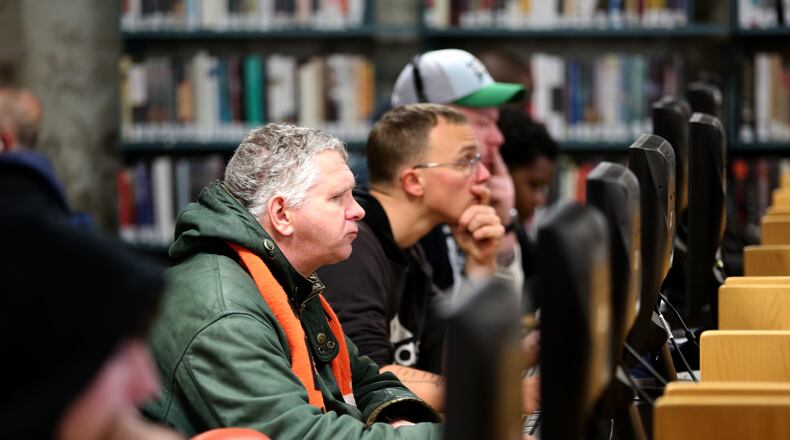Dayton in the mid-2000s provided free Internet access downtown and unsuccessfully tried to expand coverage to the entire city. The project failed mainly because the technology was in its infancy and the infrastructure costs were burdensome, officials said.
But city leaders believe this time around would be different.
“The technology is cheaper and better,” Whaley said.
Dayton has been allocated about $8 million in federal CARES Act money, which Congress approved to reimburse coronavirus-related costs.
The city soon plans to issue a notice of funding to let companies and providers know it has at least $1.4 million in relief assistance that it wants to put toward providing free wireless internet in northwest Dayton, Whaley said. The city wants to see what kind of proposals it gets to provide long-term, municipal Wi-Fi in a part of the city where many residents do not have reliable internet service, she said.
For example, a Montgomery County Educational Services Center survey of school districts conducted in the spring following the onset of the coronavirus pandemic showed nearly 1,500 Dayton Public Schools students — nearly 12 percent of the district — lacked a home computer or tablet, a reliable internet connection, or both.
Not only does northwest Dayton have poor broadband internet coverage, the area also does not have convenient and nearby access to health care services, Whaley said.
That combination is a major concern, she said, because telemedicine can help address gaps in health care services by allowing people to see a doctor or consult with medical professionals over the internet.
“CARES money is used for helping during COVID times, but we also know we have a big health care issue obviously, so this is a way we can use telehealth to be helpful,” Whaley said.
Good Samaritan Hospital closed in mid-2018 in Northwest Dayton.
The city has until the end of 2020 to spend its CARES Act dollars, but Whaley said an investment in free Wi-Fi could have much longer-lasting benefits. The money possibly could pay for setting up the infrastructure for municipal Wi-Fi, she said, and then the city might seek to partner with foundations or other organizations to pay for internet service moving forward.
Free Wi-Fi is available in the Oregon District and at library branches, some recreation centers, coffee shops, restaurants and various stores. In the past, other communities, including Oakwood and Vandalia, also offered municipal Wi-Fi.
In spring of 2005, Dayton was among the first U.S. cities to offer free wireless internet service. The pilot program, a public-private partnership, covered most of downtown, including Courthouse Square, Day Air Ballpark, RiverScape, Webster Station and sections of the Oregon Business District and Sinclair Community College.
Local company HarborLink Network installed radio transmitters around downtown to transmit the city’s wireless signal.
People could access the free internet on streets, sidewalks, green spaces and other outdoor public areas. Generally, the signal strength was not strong enough to penetrate into homes and buildings.
The free service was supposed to be funded through advertising. Users were presented ads when they logged onto the system and every 12 minutes as they clicked between websites.
By 2006, Dayton wanted to expand municipal wireless service to the entire city. The city sought bids for the project, and HarborLink won the contract in 2007.
Under its agreement with the city, HarborLink was to cover all costs of installing and operating the system, and the company planned to make money by selling ads.
The project was expected to take a couple of years to implement. But instead, it stalled and fell apart.
HarborLink President Rick Tangeman recently told this newspaper that it became clear the project was not financially feasible.
Full citywide coverage proved unattainable based on the resources made available for the project, Tangeman said, and installing and maintaining the necessary hardware and technology would have been too expensive.
The potential ad revenue simply would not cover the cost of the required investments, he said.
“The amount of radios and infrastructure ― we were looking at millions and millions of dollars,” he said.
Tangeman said technology today is much better and cheaper and he believes free municipal internet could work if it focuses on creating wireless hot spots in areas where people congregate, work and live.
“The big thing now is hot zones and pocketed areas of Wi-Fi, and I think you’ll see that more of a trend, especially as a municipal type of offering,” he said.
About the Author




